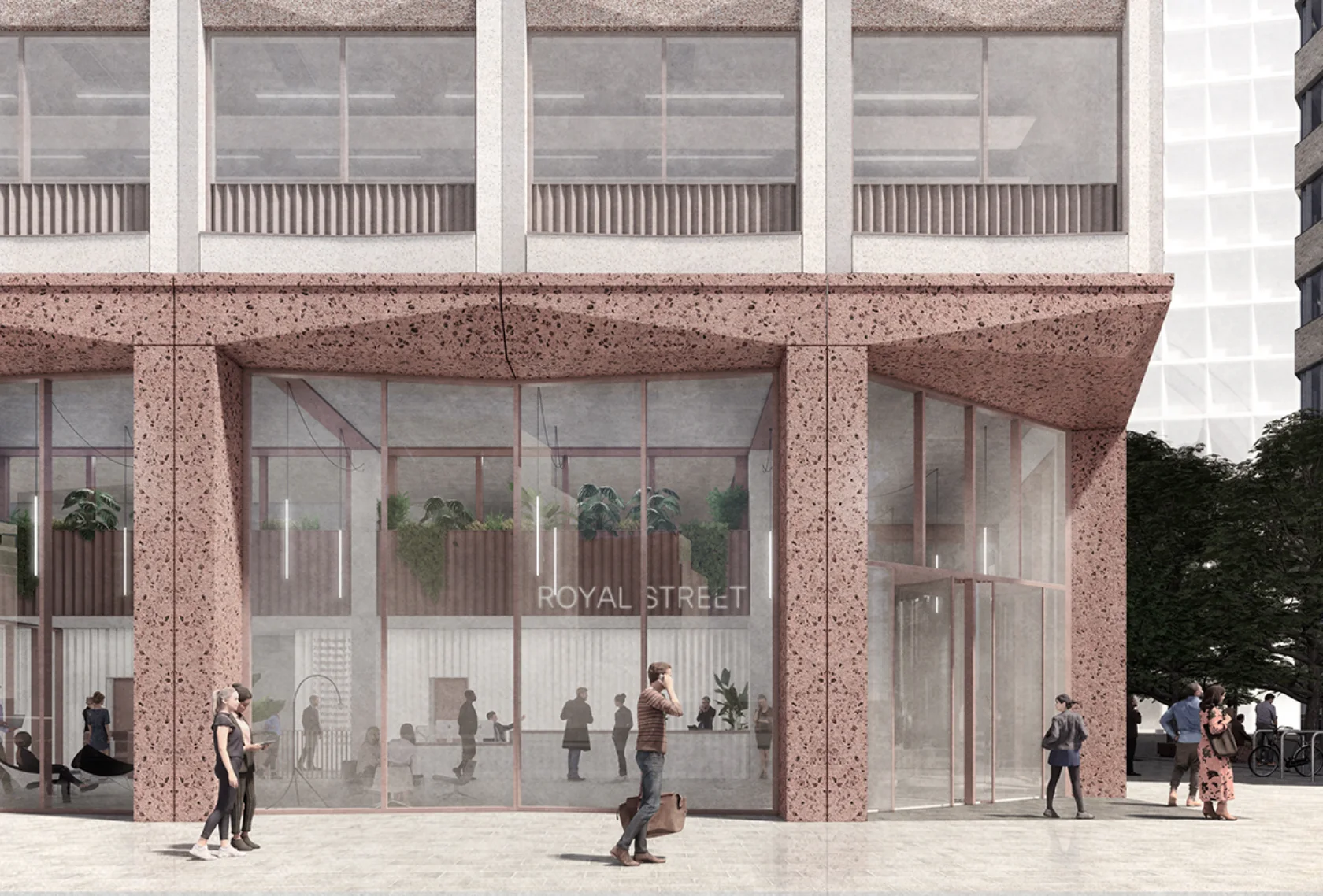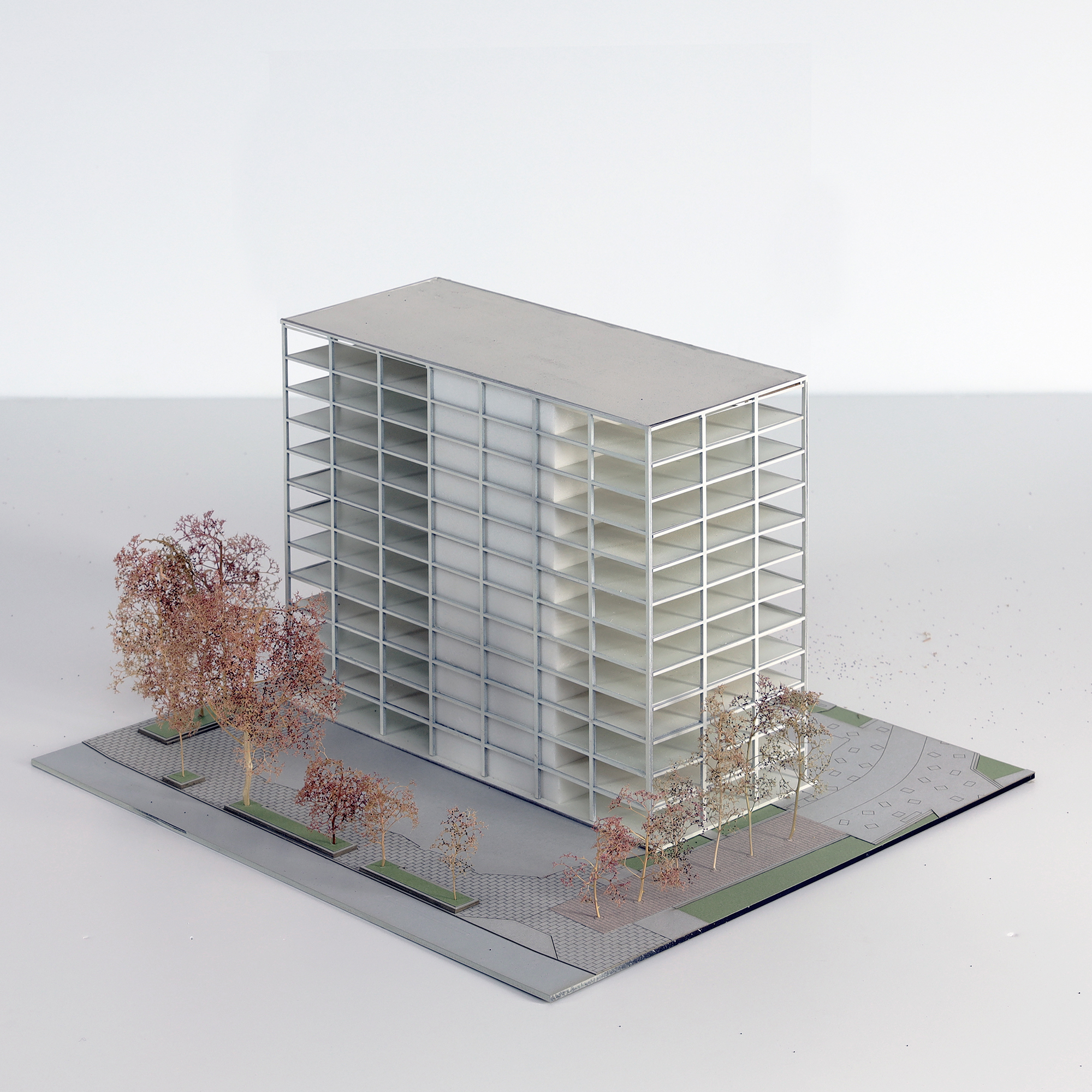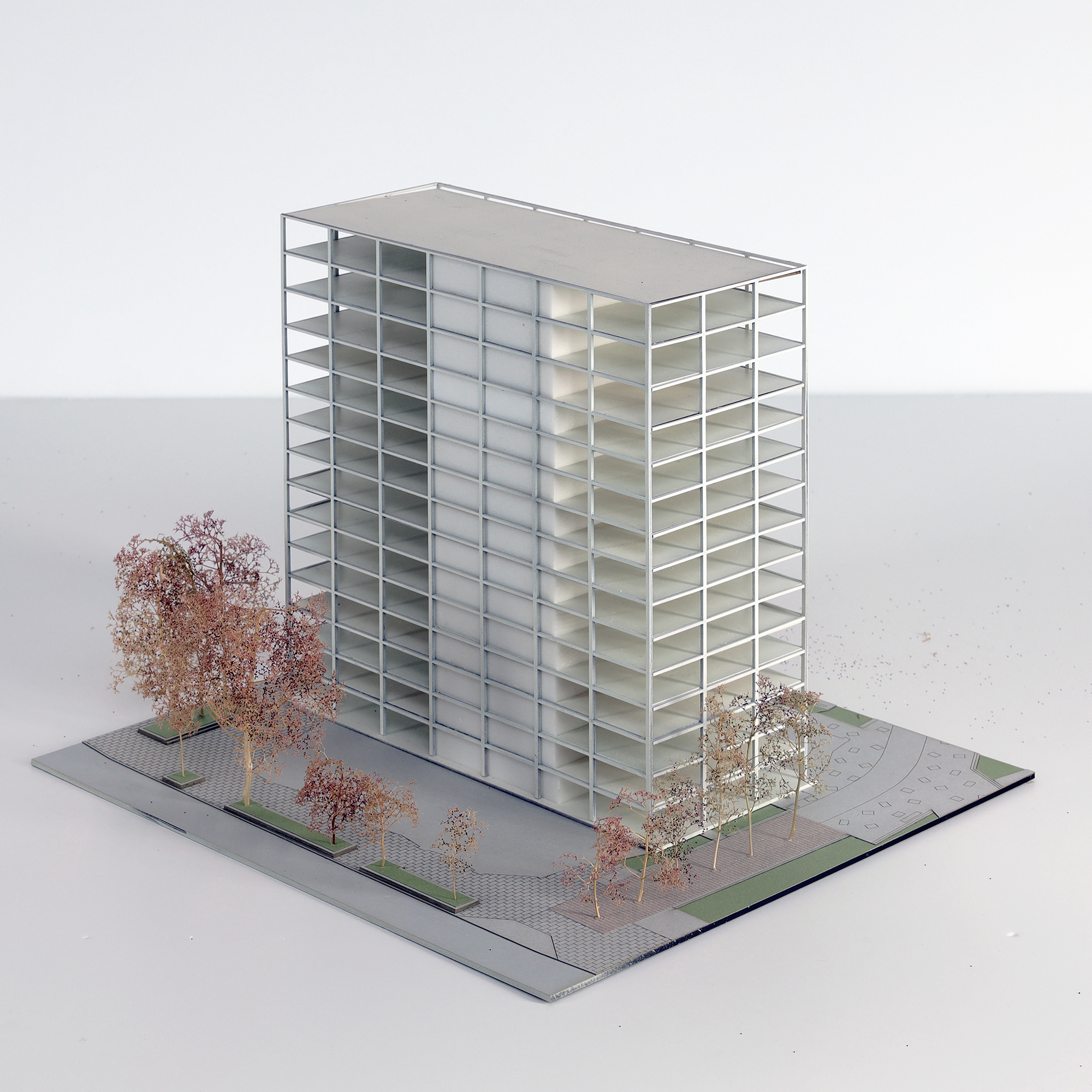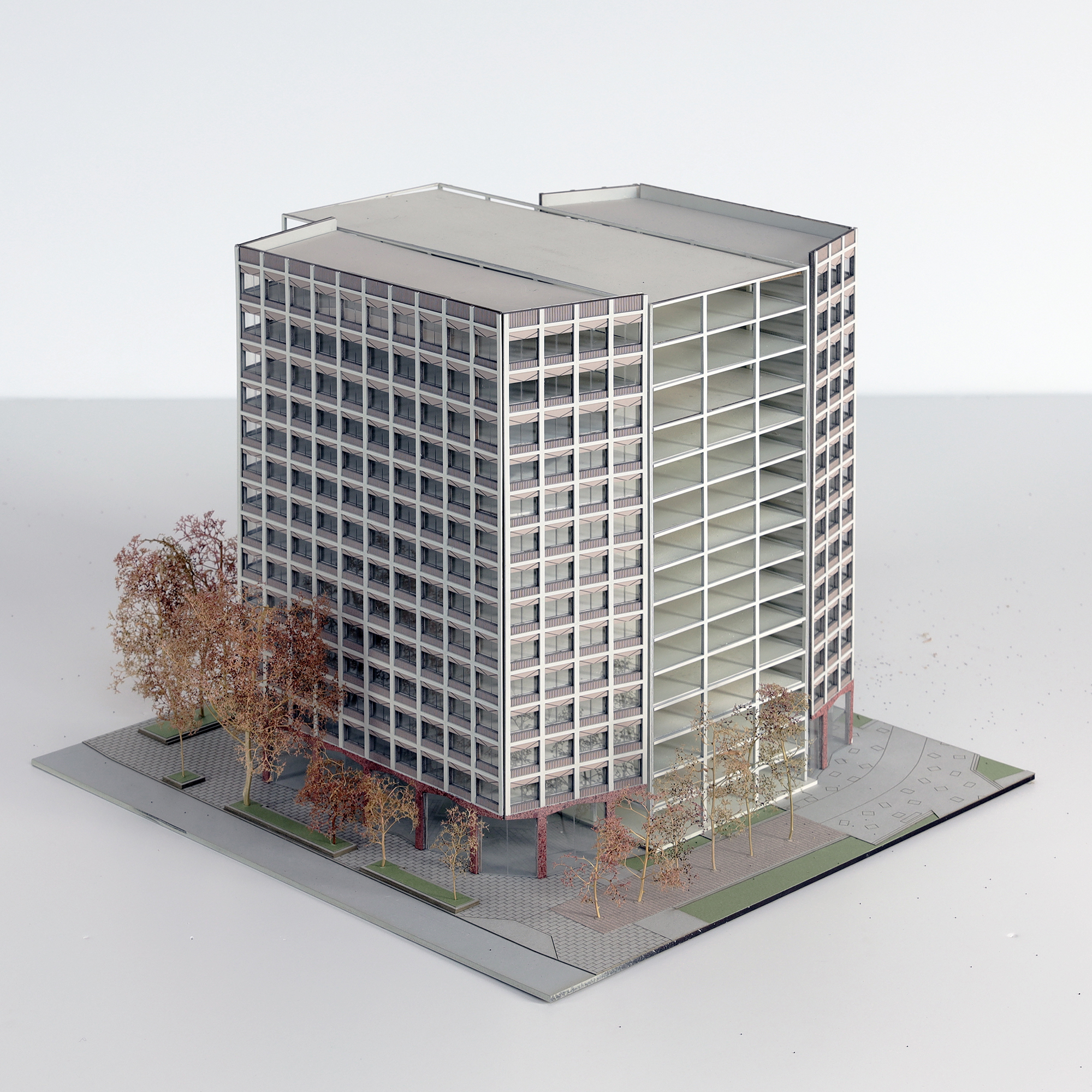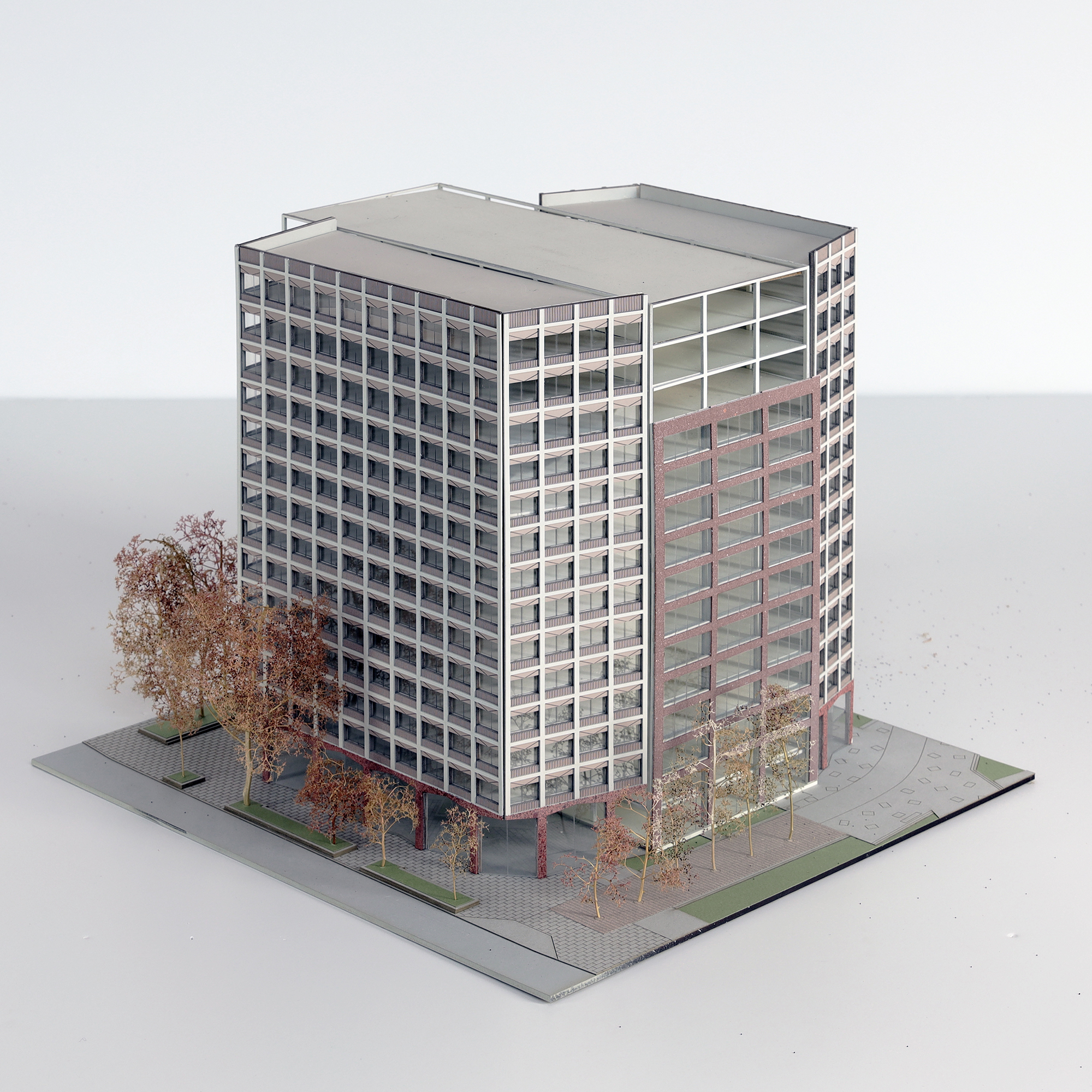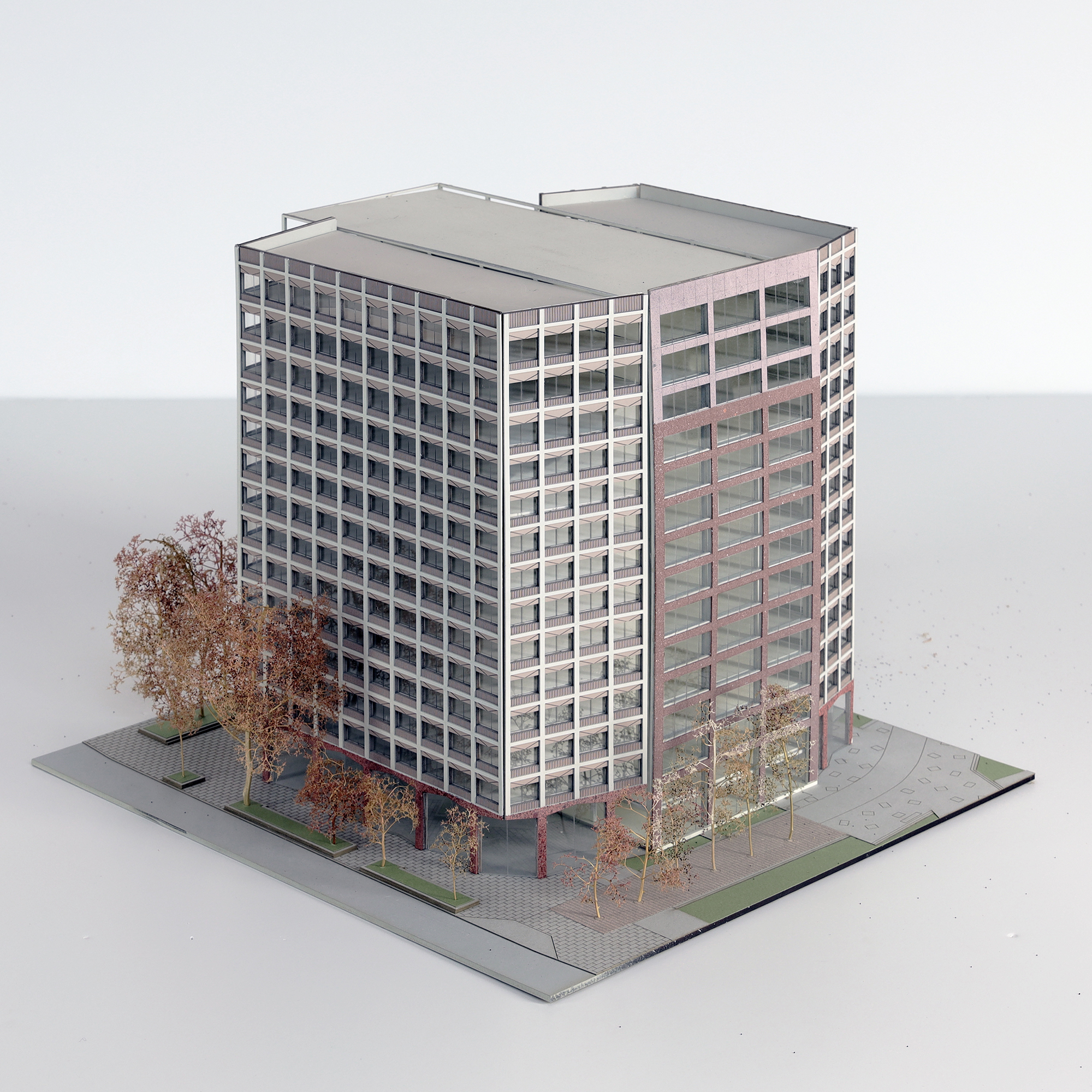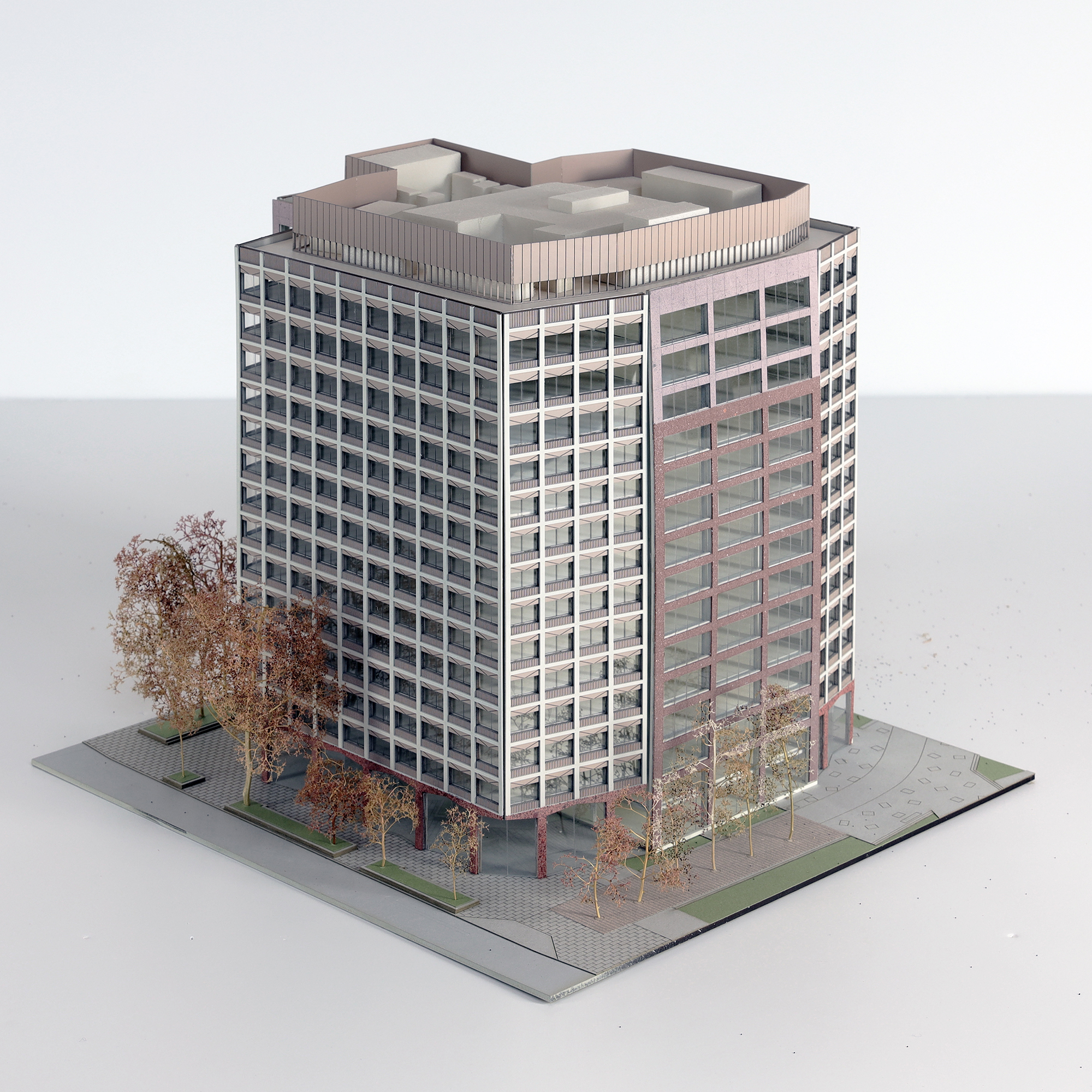“The opportunity to transform Becket house is also the opportunity for us to create a new aesthetics for the building. We have asked ourselves: How do we express the preservation of the interior on the exterior, rather than simply applying a new façade? With the diverse typologies and program, we have developed ‘Form Follows Mission’ as the overarching strategy for the design.”
Cobe Founder, Dan Stubbegaard

The Royal Street Masterplan is a multi-phased regeneration project located in the center of London, just next to St. Thomas Hospital. The existing building Becket House is located at Plot E, and is to be transformed into an office building promoting life sciences.
As part of The Royal Street Masterplan, Plot E is located in a densely urbanized area, where the surrounding buildings and existing landscape set the frame for the project. The plot is currently home to the office building Becket House, which offers a clear view of The Palace of Westminster and Elizabeth Tower from its west side, serving as a backdrop to these iconic London landmarks.

The Royal Street Masterplan adapts to the adjacent city context, designed as a backdrop to the Palace of Westminister, while scaling down towards the Lower March.


Becket House
Becket House, built in 1974, is an office building with a simple extruded form. The structure features an in-situ concrete frame, two reinforced concrete core walls, two central columns, and evenly spaced perimeter columns integrated into the façade. The façade showcases a Miesian grid with minimalist detailing.

Becket House, a 1974 polished granite-clad office building.
Research into Becket House suggests that the building is nearing the end of its theoretical lifespan. However, initial inspections reveal the structure to be in good condition, offering significant opportunities for carbon savings in both the basement and superstructure, as well as reducing construction waste, foundation work, and construction time. In addition, the building services strategy has been holistically designed to minimize fossil fuel use, reduce material waste, enhance operational performance, and plan for future reuse at the building’s end of life.

As a result, various materials and existing elements of Becket House will be reused or repurposed in its transformation and expansion. The level of intervention has been carefully calibrated to enhance quality while preserving the superstructure. By building above and around the existing structural frame, the building will be revitalized and given a new life.

Reusing the building’s superstructure significantly reduces the amount of concrete and steel required for construction, ultimately lowering embodied carbon by approximately 2,800 tonnes.
Load balancing is crucial when constructing atop the existing building. The side extensions will feature continuous lateral stability within the façade, ensuring both structural integrity and quality.
The new additions to Becket House will feature office spaces, lab-enabled floors for St. Thomas Hospital, and a grand public ground floor with key entrance areas for visitors. Plot E will thus create both a diverse environment and an appealing workplace, particularly attractive to healthcare and research tenants.

Office spaces with views to the Palace of Westminister and Elizabeth Tower.

The new structure on top of the existing Beckett House provides outdoor terraces behind a folded aluminium facade.
Central to the project is the idea of integrating the old facade with the new additions. This is realized through our ‘long life, loose fit’ approach, where elements of the original façade are incorporated into the new facades in a flexible manner, ensuring the longevity of both the façade’s expression and the materials.

The project consists of 4 facades: a base, middle, top, and the wings as the new addition. All these interact with the local surroundings, adjacent context, and the broader cityscape, respectively.
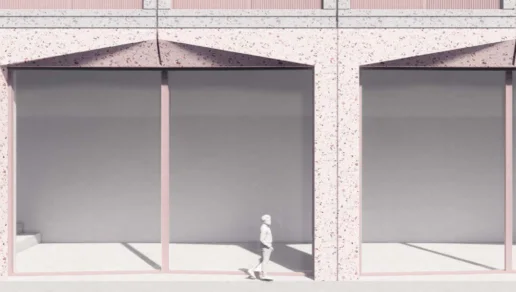
The base: Precast concrete panels with recycled aggregate from the old facade
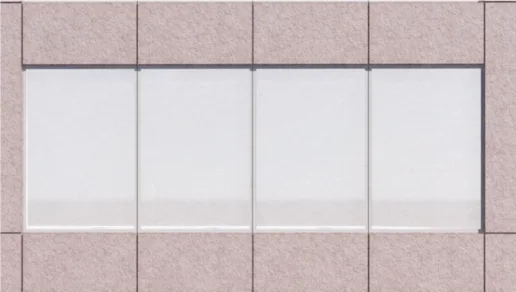
The middle: The original facade, reconstructed. Including insulated reconstituted stone panels
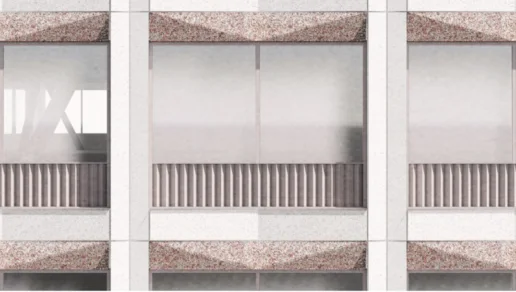
The wings: Precast panels including recycled aggregate from the old facade
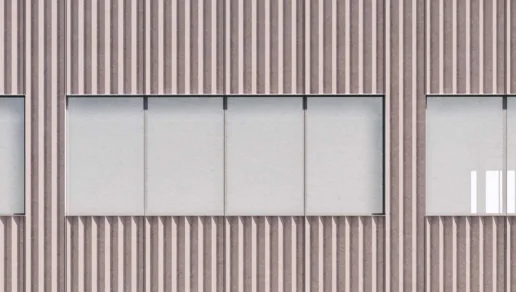
The top: Unitized aluminum panels
Despite the façade nearing the end of its design life, many components can be easily disassembled, recycled, and reintegrated into the façade system. As a result, the balmoral granite from the existing façade will be dismantled and incorporated as aggregate into the new precast façade elements. Each element will thus carry a piece of the original façade in a new expression.

The new facade of Beckett House is responsive towards it’s surroundings and the relationship to the townscape.
revitalizing the area
with urban life
A fundamental goal in the development of the Royal Street Masterplan and the transformation of Becket House is to enhance the existing connection with the adjacent hospital and create a space where health and well-being are central to the design.

The main entrance is located at the corner of the building.

A visual connection is made between the ground floor lobby and the workspaces on the first floor, separated by glazed screen and planting.
The main entrance is located at the southwestern corner of the plot, with retail spaces to the south and bicycle access to the north. The boundary between public and private areas has been softened and graduated to enhance the quality of the public realm.
A double-height lobby is situated to the west, overlooking Lambeth Palace Road. It provides views of the adjacent public space and maintains a visual connection to the workspaces on the first floor.

The lower floors are designed to accommodate a range of different uses such as lobby and reception, retail, food & beverage, cycle spa, and co-working spaces.
The ground floor features a range of spaces designed to enhance comfort and support healthy lifestyles. Emphasis has been placed on integrating this floor with the surrounding public realm, incorporating greenery into the building, and ensuring clear, inviting, and accessible circulation areas.

The subsequent design responds to the dialogue between old and new, conveying the intrinsic story of the building externally. All put together as a backdrop for the Westminster Palace and Elizabeth Tower.

